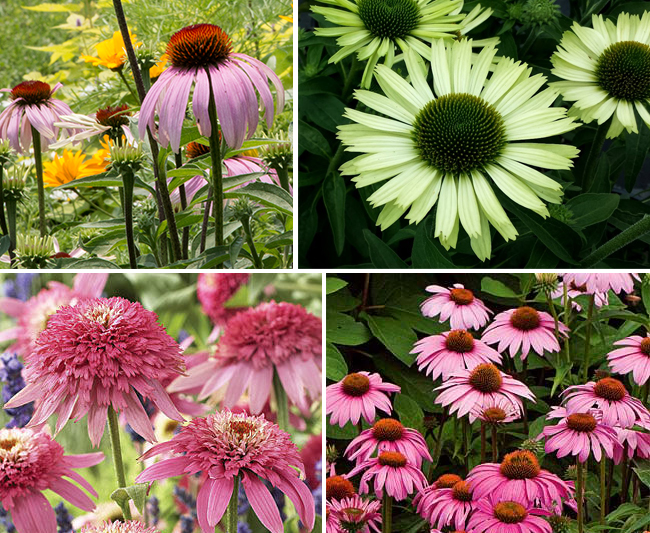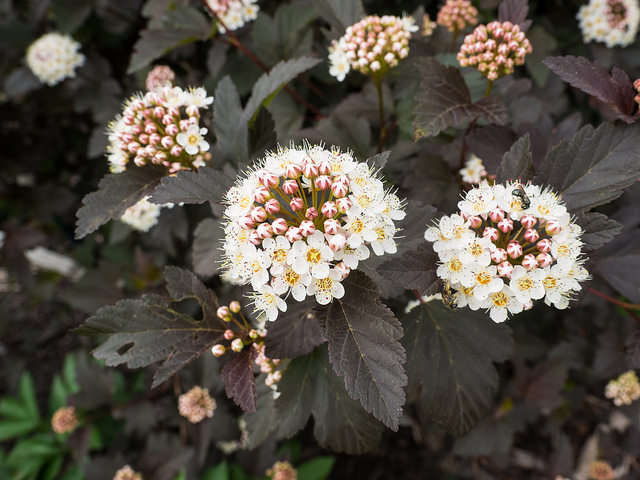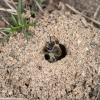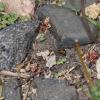What are cultivars, and do they have the same benefits to pollinators as non-cultivars? The answer depends—not all cultivars are created equally.
A visitor to our Facebook page recently asked:
“Do cultivars serve as host plants for beneficial insects? For example, does Rudbeckia ‘Goldstrum’? I know the preferred plant is native R. fulgida or hirta but the ‘Goldstrums’ are in all the nurseries and home gardens.”
Unfortunately, not all cultivars are the same. Some are bred for a different color, some for double blooms or flower shape, others for disease resistance. For example, purple coneflower has been bred into scores of cultivars with all manner of colors, double blooms, etc. Many of these cultivars are sterile and have no benefit to pollinators. Others have flower structures so complex a pollinator couldn’t find its way to the center with a map, a compass, and a native guide.
More troubling, cultivars often have reduced nutritional benefits, and haven’t been well-enough studied to identify those which may be harming pollinators in that regard.

Some cultivars, bred for foliage color, may even be toxic to insects. One study compared cultivars of ninebark (Physocarpus spp.), which has been bred into dozens of cultivars featuring various shades of red or gold foliage. In the study, ninebark beetles (Calligrapha spiraeae) were fed leaves of the cultivars ‘Monlo’ (deep red foliage) and ‘Dart’s Gold’ (chartreuse colored leaves) vs. the straight species. The beetles showed a strong preference for the regular green foliage and the foliage of the yellow cultivar, and avoided ‘Monlo’. Observers speculate that, because dark red foliage is typically high in anthocyanins, a compound which may be poisonous to herbivores, the beetles avoided the plant. It can be reasonably inferred that the caterpillars and moths that host on ninebark are also avoiding these cultivars, which are widely sold as native and beneficial to pollinators.

On the other end of the spectrum, the phlox cultivar ‘Jeana’, for example, was found naturally occurring in Tennessee, and proved to be more resistant to downy mildew than the straight species. The purple coneflower cultivar ‘magnus’—one of the most popular cultivars you’re likely to come across in the nursery trade—was bred from a variety that was more compact and flowered more heavily, but is otherwise little changed from the straight species. These cultivars provide benefits to gardeners and the nursery trade trying to sell them.
So how are you to know if a cultivar is “good” or “bad”? Unfortunately, it’s hard to tell and there isn’t a ton of research out there. You’d have to do your due diligence and try to figure out what the plant was bred for. If it has double blooms it’s an absolute no-no as they prohibit pollinators from accessing the pollen or nectar, and are almost always sterile. If they’ve been cultivated to change the flower color, they are almost certainly going to be less attractive than the straight species. If however their cultivated trait is just a larger flower or shorter habit, they may be ok. The bottom line is that, when you can get your hands on the straight species, you’re always going to have the best possible plant for pollinators.
So back to our ‘Goldsturm’. To better understand the nature of this particular cultivar, we first have to sort out some often misused and misunderstood botanical terms. In the horticultural world, there are varieties and cultivars (and hybrids – but let’s skip those for now). Although varieties and cultivars are not the same thing, the terms are often used interchangeably.
Cindy Haynes of the Dept. of Horticulture at Iowa State explains the difference:
“Varieties often occur in nature and most varieties are true to type. That means the seedlings grown from a variety will also have the same unique characteristic of the parent plant. For example, there is a white flowering redbud that was found in nature. Its scientific name is Cercis canadensis var. alba (the varietal term “alba” means white). If you were to germinate seed from this variety, most, if not all seedlings would produce white flowers.
“Cultivars are not necessarily true to type. In fact, cultivar means “cultivated variety.” Therefore, a cultivar was selected and cultivated by humans. Some cultivars originate as mutations of plants; other cultivars could be hybrids of two different varieties. To propagate true-to-type clones, many cultivars must be propagated vegetatively through cuttings, grafting, and even tissue culture. Propagation by seed usually produces something different than the parent plant.”
In the case of Rudbeckia ‘Goldsturm’, it’s a cultivated variety of Rudbeckia fulgida. The full scientific name, though you’re likely never to see it on a plant tag or in a catalog for lack of space, is Rudbeckia fulgida var. sullivantii ‘Goldsturm’. ‘Goldsturm’ was selected by a botanist in the Czech republic, who admired the compact habit and floriferous nature of certain plants he had grown from the sulivantii variety. He then bred out plants of this variety that showed the uniform traits he admired, and introduced these plants as the cultivar we know today. It can be presumed that the first plants introduced were divisions, and as such true cultivars. Today, some nurseries propagate Rudbkecia ‘Goldsturm’ from seed. These are actually not then the the true cultivar ‘Goldsturm’ but would be merely seedlings of the sulivantii variety of Rudbeckia fulgida.

Knowing the history of the cultivar, ‘Goldsturm’ is a fairly pure one that hasn’t been tinkered with too much, but has merely been selected for its compact nature and propensity to flower more heavily than the straight species. For this reason, we can assume it retains many of the same properties that attract pollinators who may use it as a host plant or nectar source – but without studying it against the non-cultivar, we can’t say for sure.
Further Reading
Learn about a community science project inspired by this article!
Check out our Pollinator Conservation Resource Center for regionally relevant resources on establishing habitat, plant lists, and more!




